
EBK CHEMISTRY: AN ATOMS FIRST APPROACH
2nd Edition
ISBN: 9780100552234
Author: ZUMDAHL
Publisher: YUZU
expand_more
expand_more
format_list_bulleted
Concept explainers
Textbook Question
Chapter 10, Problem 63E
Match the vapor pressure diagrams with the solute-solvent combinations and explain your answers.
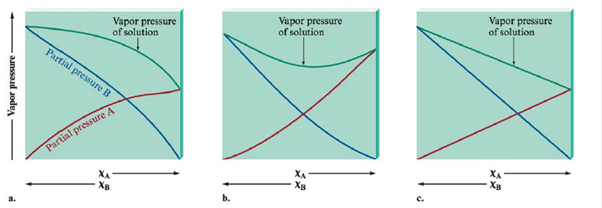
a. 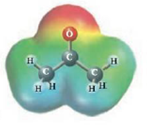 and
and 
b. 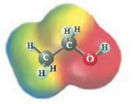 and
and 
c. 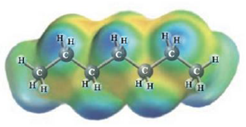 and
and 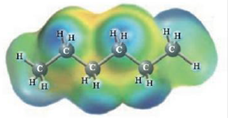
d. 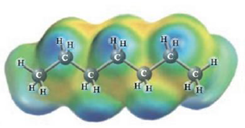 and
and 
Expert Solution & Answer
Want to see the full answer?
Check out a sample textbook solution
Students have asked these similar questions
A student proposes the following two-step synthesis of an ether from an alcohol A:
1. strong base
A
2. R
Is the student's proposed synthesis likely to work?
If you said the proposed synthesis would work, enter the chemical
formula or common abbreviation for an appropriate strong base to use
in Step 1:
If you said the synthesis would work, draw the structure of an alcohol
A, and the structure of the additional reagent R needed in Step 2, in
the drawing area below.
If there's more than one reasonable choice for a good reaction yield,
you can draw any of them.
☐
Click and drag to start drawing a structure.
Yes
No
ロ→ロ
0|0
G
Х
D
: ☐
ப
टे
Predict the major products of this organic reaction.
Be sure to use wedge and dash bonds when necessary, for example to distinguish between different major products.
☐
☐
: ☐
+
NaOH
HO
2
Click and drag to start
drawing a structure.
Shown below are five NMR spectra for five different C6H10O2 compounds. For each spectrum, draw the structure of the compound, and assign the spectrum by labeling H's in your structure (or in a second drawing of the structure) with the chemical shifts of the corresponding signals (which can be estimated to nearest 0.1 ppm). IR information is also provided. As a reminder, a peak near 1700 cm-1 is consistent with the presence of a carbonyl (C=O), and a peak near 3300 cm-1 is consistent with the presence of an O–H.
Extra information: For C6H10O2 , there must be either 2 double bonds, or 1 triple bond, or two rings to account for the unsaturation. There is no two rings for this problem.
A strong band was observed in the IR at 1717 cm-1
Chapter 10 Solutions
EBK CHEMISTRY: AN ATOMS FIRST APPROACH
Ch. 10 - Prob. 1RQCh. 10 - Using KF as an example, write equations that refer...Ch. 10 - Prob. 3RQCh. 10 - Prob. 4RQCh. 10 - Define the terms in Raoults law. Figure 10-9...Ch. 10 - In terms of Raoults law, distinguish between an...Ch. 10 - Prob. 7RQCh. 10 - Prob. 8RQCh. 10 - Prob. 9RQCh. 10 - Prob. 10RQ
Ch. 10 - Prob. 1ALQCh. 10 - Prob. 2ALQCh. 10 - Prob. 3ALQCh. 10 - Prob. 4ALQCh. 10 - You have read that adding a solute to a solvent...Ch. 10 - Prob. 6ALQCh. 10 - Prob. 7ALQCh. 10 - Prob. 8ALQCh. 10 - Prob. 9ALQCh. 10 - Prob. 10ALQCh. 10 - Rubbing alcohol contains 585 g isopropanol...Ch. 10 - Prob. 12SRCh. 10 - Prob. 13SRCh. 10 - Prob. 14SRCh. 10 - Calculate the sodium ion concentration when 70.0...Ch. 10 - Write equations showing the ions present after the...Ch. 10 - Prob. 17QCh. 10 - The weak electrolyte NH3(g) does not obey Henrys...Ch. 10 - The two beakers in the sealed container...Ch. 10 - The following plot shows the vapor pressure of...Ch. 10 - Prob. 21QCh. 10 - Prob. 22QCh. 10 - Prob. 23QCh. 10 - Prob. 24QCh. 10 - Prob. 25QCh. 10 - Prob. 26QCh. 10 - Explain the terms isotonic solution, crenation,...Ch. 10 - Prob. 28QCh. 10 - Prob. 29ECh. 10 - Prob. 30ECh. 10 - Common commercial acids and bases are aqueous...Ch. 10 - In lab you need to prepare at least 100 mL of each...Ch. 10 - Prob. 33ECh. 10 - Prob. 34ECh. 10 - Prob. 35ECh. 10 - Calculate the molarity and mole fraction of...Ch. 10 - Prob. 37ECh. 10 - Prob. 38ECh. 10 - Prob. 39ECh. 10 - Prob. 40ECh. 10 - Although Al(OH)3 is insoluble in water, NaOH is...Ch. 10 - Prob. 42ECh. 10 - Prob. 43ECh. 10 - Prob. 44ECh. 10 - Prob. 45ECh. 10 - Which ion in each of the following pairs would you...Ch. 10 - Rationalize the trend in water solubility for the...Ch. 10 - Prob. 48ECh. 10 - The solubility of nitrogen in water is 8.21 104...Ch. 10 - Calculate the solubility of O2 in water at a...Ch. 10 - Glycerin, C3H8O3, is a nonvolatile liquid. What is...Ch. 10 - Prob. 52ECh. 10 - The normal boiling point of diethyl ether is...Ch. 10 - At a certain temperature, the vapor pressure of...Ch. 10 - A solution is made by dissolving 25.8 g urea...Ch. 10 - A solution of sodium chloride in water has a vapor...Ch. 10 - Prob. 57ECh. 10 - A solution is prepared by mixing 0.0300 mole of...Ch. 10 - What is the composition of a methanol...Ch. 10 - Benzene and toluene form an ideal solution....Ch. 10 - Which of the following will have the lowest total...Ch. 10 - Prob. 62ECh. 10 - Match the vapor pressure diagrams with the...Ch. 10 - The vapor pressures of several solutions of...Ch. 10 - A solution is prepared by dissolving 27.0 g urea,...Ch. 10 - A 2.00-g sample of a large biomolecule was...Ch. 10 - What mass of glycerin (C3H8O3), a nonelectrolyte,...Ch. 10 - The freezing point of 1-butanol is 25.50C and Kf...Ch. 10 - Prob. 69ECh. 10 - What volume of ethylene glycol (C2H6O2), a...Ch. 10 - Reserpine is a natural product isolated from the...Ch. 10 - A solution contains 3.75 g of a nonvolatile pure...Ch. 10 - a. Calculate the freezing-point depression and...Ch. 10 - Erythrocytes are red blood cells containing...Ch. 10 - Prob. 75ECh. 10 - Prob. 76ECh. 10 - Prob. 77ECh. 10 - Prob. 78ECh. 10 - Consider the following solutions: 0.010 m Na3PO4...Ch. 10 - From the following: pure water solution of...Ch. 10 - Prob. 81ECh. 10 - Prob. 82ECh. 10 - Prob. 83ECh. 10 - Consider the following representations of an ionic...Ch. 10 - Prob. 85ECh. 10 - Prob. 86ECh. 10 - Use the following data for three aqueous solutions...Ch. 10 - The freezing-point depression of a 0.091-m...Ch. 10 - Prob. 89ECh. 10 - A 0.500-g sample of a compound is dissolved in...Ch. 10 - The solubility of benzoic acid (HC7H5O2), is 0.34...Ch. 10 - Prob. 92AECh. 10 - Prob. 94AECh. 10 - Explain the following on the basis of the behavior...Ch. 10 - Prob. 96AECh. 10 - Prob. 97AECh. 10 - Prob. 98AECh. 10 - A solution is made by mixing 50.0 g acetone...Ch. 10 - Prob. 100AECh. 10 - Prob. 101AECh. 10 - Prob. 102AECh. 10 - An unknown compound contains only carbon,...Ch. 10 - Prob. 104AECh. 10 - Prob. 105AECh. 10 - Prob. 106AECh. 10 - Prob. 107AECh. 10 - Prob. 108AECh. 10 - Patients undergoing an upper gastrointestinal...Ch. 10 - Prob. 110CWPCh. 10 - Prob. 111CWPCh. 10 - For each of the following pairs, predict which...Ch. 10 - The normal boiling point of methanol is 64.7C. A...Ch. 10 - A solution is prepared by mixing 1.000 mole of...Ch. 10 - Prob. 115CWPCh. 10 - A 4.7 102 mg sample of a protein is dissolved in...Ch. 10 - Prob. 117CWPCh. 10 - The vapor pressure of pure benzene is 750.0 torr...Ch. 10 - Prob. 119CPCh. 10 - Plants that thrive in salt water must have...Ch. 10 - You make 20.0 g of a sucrose (C12H22O11) and NaCl...Ch. 10 - Prob. 122CPCh. 10 - The vapor in equilibrium with a pentane-hexane...Ch. 10 - Prob. 124CPCh. 10 - Prob. 125CPCh. 10 - Prob. 126CPCh. 10 - Prob. 127CPCh. 10 - You have a solution of two volatile liquids, A and...Ch. 10 - In some regions of the southwest United States,...Ch. 10 - Prob. 130IPCh. 10 - An aqueous solution containing 0.250 mole of Q, a...Ch. 10 - Anthraquinone contains only carbon, hydrogen, and...
Knowledge Booster
Learn more about
Need a deep-dive on the concept behind this application? Look no further. Learn more about this topic, chemistry and related others by exploring similar questions and additional content below.Similar questions
- Predict the major products of the organic reaction below. : ☐ + Х ك OH 1. NaH 2. CH₂Br Click and drag to start drawing a structure.arrow_forwardNG NC 15Show all the steps you would use to synthesize the following products shown below using benzene and any organic reagent 4 carbons or less as your starting material in addition to any inorganic reagents that you have learned. NO 2 NC SO3H NO2 OHarrow_forwardDon't used hand raiting and don't used Ai solutionarrow_forward
- Please show full mechanism for this equation, all arrows and resonance. I would like to see the mechanisms for para, ortho, and meta positions! Thank youarrow_forward1 Please provide an efficient synthesis of the product below from the starting material. Use the starting material as the ONLY source of carbon atoms. Show the synthesis of each compound that would be used in the overall synthesis of the product. [This synthesis uses alkyne and alcohol chemistry.]arrow_forward10- 4000 20 20 30- %Reflectance 60 50- 09 60- 40- Date: Thu Feb 06 17:30:02 2025 (GMT-05:0(UnknownP Scans: 8 Resolution: 2.000 70 70 88 80 3500 3000 2500 90 100 00 Wavenumbers (cm-1) 2000 1500 2983.10 2359.13 1602.52 1584.22 1451.19 1391.87 1367.07 1314.37 1174.34 1070.13 1027.33 1714.16 1269.47 1000 1106.08 1001.14 937.02 873.60 850.20 780.22 686.91 674.38 643.09 617.98 02/06/25 16:38:20arrow_forward
- d. Draw arrow-pushing mechanism for an enzymatic retro-aldol reaction of the following hexose. Use B: and/or HA as needed. OH OH سية HO OH OHarrow_forward4. Calculate the wavelength of a photon needed to excite a transition between neighbouring energy levels of a harmonic oscillator of effective mass equal to that of an oxygen atom and with a force constant of 544 N m¹.arrow_forward2. Identify the strongest type of intermolecular force that exists between each pair of compounds: a. Ammonium chloride / H₂O b. OH C. d.arrow_forward
arrow_back_ios
SEE MORE QUESTIONS
arrow_forward_ios
Recommended textbooks for you
 ChemistryChemistryISBN:9781305957404Author:Steven S. Zumdahl, Susan A. Zumdahl, Donald J. DeCostePublisher:Cengage Learning
ChemistryChemistryISBN:9781305957404Author:Steven S. Zumdahl, Susan A. Zumdahl, Donald J. DeCostePublisher:Cengage Learning Chemistry: An Atoms First ApproachChemistryISBN:9781305079243Author:Steven S. Zumdahl, Susan A. ZumdahlPublisher:Cengage Learning
Chemistry: An Atoms First ApproachChemistryISBN:9781305079243Author:Steven S. Zumdahl, Susan A. ZumdahlPublisher:Cengage Learning
- Chemistry: Matter and ChangeChemistryISBN:9780078746376Author:Dinah Zike, Laurel Dingrando, Nicholas Hainen, Cheryl WistromPublisher:Glencoe/McGraw-Hill School Pub Co
 Introductory Chemistry: An Active Learning Approa...ChemistryISBN:9781305079250Author:Mark S. Cracolice, Ed PetersPublisher:Cengage Learning
Introductory Chemistry: An Active Learning Approa...ChemistryISBN:9781305079250Author:Mark S. Cracolice, Ed PetersPublisher:Cengage Learning Chemistry: Principles and PracticeChemistryISBN:9780534420123Author:Daniel L. Reger, Scott R. Goode, David W. Ball, Edward MercerPublisher:Cengage Learning
Chemistry: Principles and PracticeChemistryISBN:9780534420123Author:Daniel L. Reger, Scott R. Goode, David W. Ball, Edward MercerPublisher:Cengage Learning

Chemistry
Chemistry
ISBN:9781305957404
Author:Steven S. Zumdahl, Susan A. Zumdahl, Donald J. DeCoste
Publisher:Cengage Learning

Chemistry: An Atoms First Approach
Chemistry
ISBN:9781305079243
Author:Steven S. Zumdahl, Susan A. Zumdahl
Publisher:Cengage Learning


Chemistry: Matter and Change
Chemistry
ISBN:9780078746376
Author:Dinah Zike, Laurel Dingrando, Nicholas Hainen, Cheryl Wistrom
Publisher:Glencoe/McGraw-Hill School Pub Co

Introductory Chemistry: An Active Learning Approa...
Chemistry
ISBN:9781305079250
Author:Mark S. Cracolice, Ed Peters
Publisher:Cengage Learning

Chemistry: Principles and Practice
Chemistry
ISBN:9780534420123
Author:Daniel L. Reger, Scott R. Goode, David W. Ball, Edward Mercer
Publisher:Cengage Learning
Solutions: Crash Course Chemistry #27; Author: Crash Course;https://www.youtube.com/watch?v=9h2f1Bjr0p4;License: Standard YouTube License, CC-BY